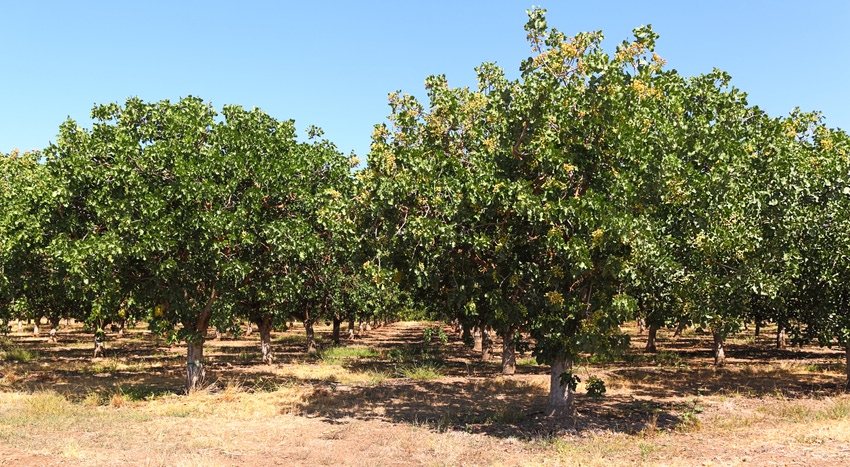
Pistachio chill hour accumulation was reported marginal for most growing areas in California in January. Six weeks later, not much had changed.
Bob Klein, research director for the California Pistachio Research Board (CPRB), says no significant chill occurred through February as wet and warmer weather continued. He adds that chill hour accumulation by early March was in the “okay” range.
“We are still attempting to fit numbers to the plants, but don’t have a full understanding of how plants are affected (by chill hours),” Klein said. “We had a lot of cloudy days in the past month, so bud temperatures were not high.”
Zack Raven, grower services manager at Keenan Farms headquartered at Kettleman City in Kings County, said chill at his west side location was below adequate. However, he does not expect this year to be as devastating as the 2015 crop year when even fewer chill hours were recorded.
Raven expressed some optimism tied to the number of cloudy and foggy days to date.
Studies continue to determine on how pistachio trees react to temperatures during dormancy. Klein says it could take another decade of research to determine the effect that temperatures play in pistachio production and how to mitigate those effects.
In a report to pistachio growers, Klein noted the adequate chill for the 2016 growing season and the year’s record crop pegged at about 900 million pounds, well above earlier projections. Coming off a record on-year crop, based on previous history, growers in 2017 could expect about a 65 percent to 75 percent crop, or about 585-675 million pounds from 250,000 bearing acres.
Klein says a challenge for growers this spring could be the increased incidence of Botryosphaeria fungal disease. A previous epidemic of this malady occurred following the wet winter of 1997-1998.
The disease is spread by water, but the preceding dry years may have lowered the numbers of infectious spores in orchards. Growers are advised to monitor for disease symptoms and access the amount of inoculum in orchards.
The significance of Navel orangeworm (NOW) damage to the pistachio crop is another concern this year. At an average damage level of two percent NOW damage in 2016, Klein told growers the pest costs the pistachio industry about $100 million in lost sales and aflatoxin testing costs.
The federal marketing order which regulates pistachio processors on aflatoxin levels was reauthorized recently by both the numbers of growers voting and their respective volume.
The concern for this year is the potential loss of pyrethroid materials for NOW control. The U.S. Environmental Protection Agency is conducting an environmental risk assessment of bifenthrin and Klein says the agency is making assumptions about product use which are incorrect.
The pistachio industry leader urges growers to submit comments outlining their product use in their integrated pest management programs, including the benefits and actual use patterns. The comment period is open until March 31. Growers can gain more information on the comment procedure at www.defendbifenthrin.com.
On another issue, Klein reports that uncertainty remains in regard to the Food Safety Modernization Act and how the new law applies to pistachios. Growers can expect training and water test requirements in the future with likely no exemptions.
He says the Associated Committee for Pistachios is working on a new grower food safety questionnaire which will be mailed to producers this spring.
Klein adds that the next pistachio grower referendum will be whether to reauthorize the California Pistachio Research Board and to increase the maximum grower assessment from 0.5 cent per pound to 1.5 cent per pound. The proposed funding increase would be used in part for endowments to replace retiring faculty and to hire new expertise in sterile insect technology, or SIT.
Klein reminds growers that ballots to elect representatives and alternates to serve on the California Pistachio Research Board will be mailed this month. Completed ballots must be returned by March 31.
About the Author(s)
You May Also Like




